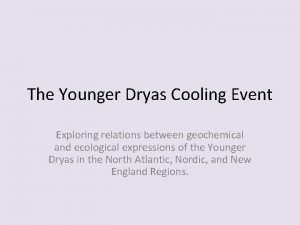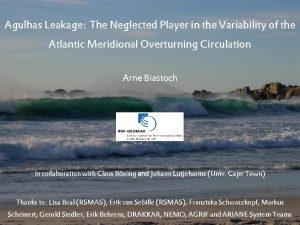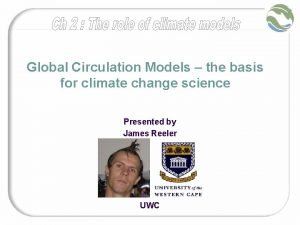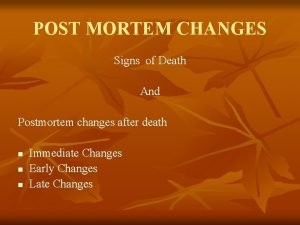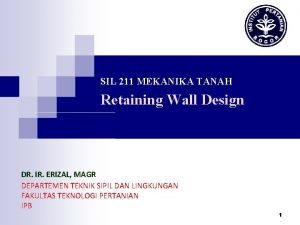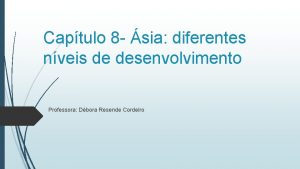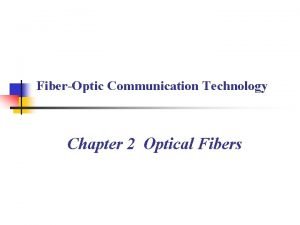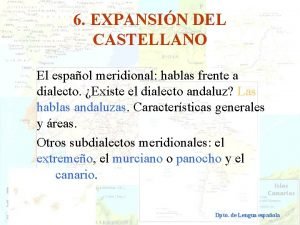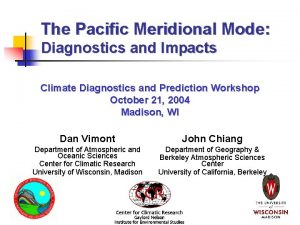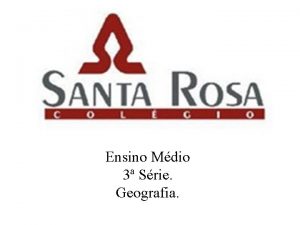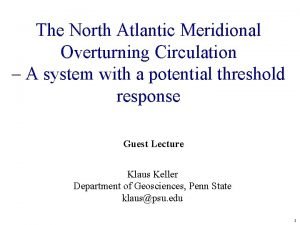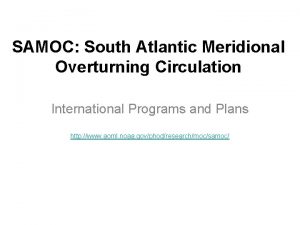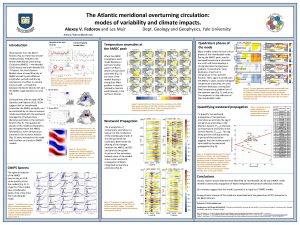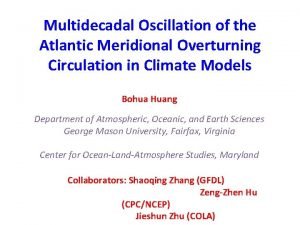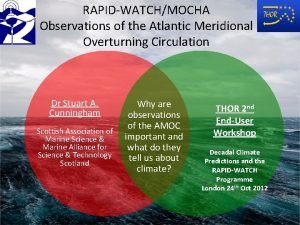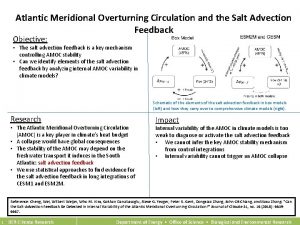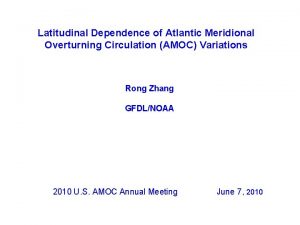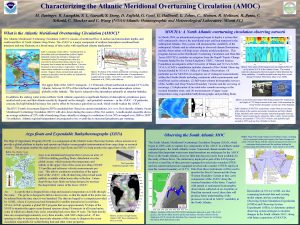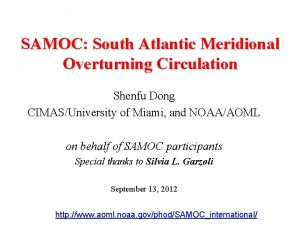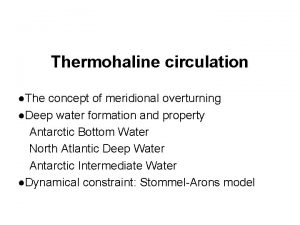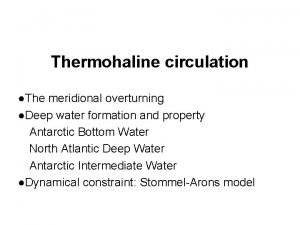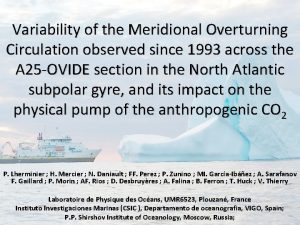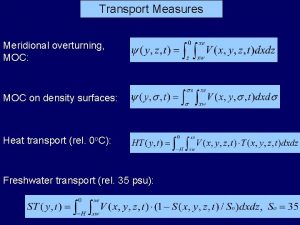Simulating the Atlantic Meridional Overturning Circulation with HYCOM















- Slides: 15

Simulating the Atlantic Meridional Overturning Circulation with HYCOM and POP Jianjun Yin COAPS, Florida State University Eric Chassignet, William Large, Nancy Norton, Stephen Yeager, Alan Wallcraft and Sumner Dean CCSM workshop, 2008

The Coordinated Ocean-ice Reference Experiment (CORE) • An experimental protocol to examine the simulations of ocean-ice models with a consistent forcing (Griffies et al. , 2008) • The atmospheric state is prescribed Dataset of Large and Yeager, 2004 short-wave radiation, long-wave radiation, wind stress, wind speed, surface air temperature, relative humidity, precipitation, runoff • Thermal Forcing is based on bulk formulae

Salinity Forcing (1) P-E+R (2) P-E+R + weak restoring (3) P-E+R + strong restoring POP: Global net salt flux is compensated (Bill Large, personal communication) HYCOM: Global net salt flux is not compensated The salinity forcing between HYCOM and POP is not perfectly identical

HYCOM and POP Grid: NCAR’s gx 1 v 3 grid; HYCOM: Arakawa-C; POP: Arakawa-B Vertical resolution: HYCOM: 32 hybrid layers; POP: 40 levels Initialization: January of the Poles Hydrographic Climatology, resting Duration: 150 years for three salinity boundary conditions POP HYCOM

MOC Collapses Active but weak Vigorous Unit: Sv

Time Evolution HYCOM POP The MOC index is defined as the maximum streamfunction value at 45 o. N A notable difference is the variability of the MOC

SST Biases Cooling at high-latitude NA Cold bias is reduced

SSS Biases Large freshening at high-latitude NA Reduced freshening Impact of the differing salinity boundary condition

Salinity at 25 o. W Large freshening at high-latitude NA AAIW and overflow High salinity in NA Unit: psu

Temp at 25 o. W

Meridional Velocity at 30 o. N No deep western boundary current Strong deep current Unit: m/s

Thermohaline Fluxes at Deep Convection Region (50 o-80 o. N, 60 o. W-30 o. E) Freshwater flux shows most significant difference between HYCOM and POP

Conclusion and Future Work • HYCOM and POP show both similarity and difference in terms of the MOC simulation. • Both HYCOM and POP cannot simulates an active MOC under CORE forcing without the application of salinity restoring. • Once salinity restoring is applied, the MOC is active in both models. The stronger the restoring, the more vigorous of the MOC. • The MOC shows differences in HYCOM and POP such as its variability. It is important to understand these differences. • Comparison of the characteristics of the MOC between the uncoupled and coupled models, and between the coupled CCSM 3/HYCOM and CCSM 3/POP.

HYCOM/T 42 CAM

HYCOM/T 42 CAM
 Atlantic meridional overturning circulation
Atlantic meridional overturning circulation Atlantic meridional overturning circulation
Atlantic meridional overturning circulation Single circulation and double circulation
Single circulation and double circulation Single circulation and double circulation
Single circulation and double circulation Alveoli definition
Alveoli definition Slowing atlantic ocean circulation
Slowing atlantic ocean circulation Cadaveric spasm and rigor mortis difference
Cadaveric spasm and rigor mortis difference Diaphanous test
Diaphanous test Overturning moment
Overturning moment Weep hole pipe
Weep hole pipe China beijing
China beijing Meridional rays in optical fiber
Meridional rays in optical fiber Meridional e setentrional
Meridional e setentrional Español meridional
Español meridional Trade wind
Trade wind Meridional e setentrional
Meridional e setentrional
